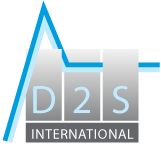Railway Transport – LCCA
Life Cycle Cost Analysis for urban transport systems.
History
Life Cycle Cost Analysis became popular in the 1960’s when the US government agencies started using it as an instrument to improve cost effectiveness of building and equipment procurement.
From that point, the use has spread in the business sector for all kind of project evaluation and management accounting. In recent years the use is applied more and more in the Public Transport sector due to the appearance of Built-Operate-Transfer (BOT), or similar, contracts.
The private entrepreneur and the financing organizations need to calculate in detail investment and operation/maintenance costs and the relationship between both. In this activity, input can be expected from the traditional (government owned) transport system operators (clients) who have gained expertise by operating the system during long periods of time.
General
The purpose of the Life Cycle Cost Analysis (LCCA ) method is to calculate the overall costs of project alternatives and to select the design that ensures the system will provide the lowest overall cost of ownership/operation consistent with its quality and function.
The LCCA has to be performed early in the design process while there is still a chance to refine the design to ensure a reduction in Life Cycle Cost (LCC ). The first and most challenging task of a LCCA is to determine the economic effects of systems or the alternatives and to quantify these effects in terms of money.
The LCCA calculates the costs of a system or a product over its entire lifespan including planning, design, procurement, installation, operation, maintenance, replacements, disposal or salvage.
LCCA methodology
Important issues and methods included in the proposed LCCA:
- Clients approval;
- Technical and financial risk analysis;
- RAMS (Reliability, Availability, Maintenance, Safety) data integration;
- System availability cost integration;
- Predictive and preventive maintenance effects;
- General sensitivity analysis;
- Sustainable solutions.
Life cycle cost analysis for trackwork
D2S International proposes a two-step approach:
Step 1
Ranking of alternatives;
Step 2
Detailed analysis of selected alternative(s).
As step 1, but taking into account for a specific selected alternative or combination of alternatives:
- Technical risk analysis;
- RAMS data (Reliability, Availability, Maintainability, Safety);
- Predictive/preventive maintenance option;
- Financial risk analysis;
- General sensitivity analysis.
Description of some items
Disposal costs
If it is required in the contract to restore the initial situation at the end of the contract, it is certainly needed to consider the disposal cost, as such costs are quite high these days .
Other costs
It is important to consider also the financing cost of the system as there can be a considerable delay between the expense date and the payment date.
Risk analysis
As in every analysis, there is uncertainty in the LCCA assessment.
These risks can be split in two parts:
- Financial risk;
- Technical risk.
Replacement costs
Depending on the duration of the contract, it is possible that a number of components have to be replaced during the contract.
It is very important to schedule these replacement during the design stage, as the costs involved are high and indirect costs could be applicable as there is loss of revenue for the operator.
As mentioned above, the quality of the components and the quality of installation has a major impact on the need for replacement.
Net present value analysis
As the contract duration usually runs over a number of years, it is necessary to make all calculations time related.
Conventional formulas are applied in this case for discount rates, inflation rates and price escalation values.
Initial installation costs
- Initial costs for track works usually do not include the land acquisition as the land usually belongs to the authority.
- All direct costs:
- Design specification and Procurement of all materials;
- Checking testing and commissioning of all materials;
- All installation works;
- Survey, quality control and quality assurance of the works;
- Testing and commissioning of the system are usually within the scope of works of the contractor.
- Sometimes the contractor is also in charge of the indirect costs:
- Relocation of utilities;
- Traffic diversion management;
- Compensation for commercial losses of shops;
- …
- In case of the latter, this responsibility has to be specified in the contract.
Operation, maintenance and repair costs
- The operational costs of a track work system are in general inexistent for the contractor, unless it is specified differently in the contract.
- The preventive and curative maintenance on the contrary, is very important and cost intensive and is heavily influenced:
- by the choice of materials, systems and installation techniques,
- by the type of usage of the system and
- by the type and condition of the operators materials.
- For repair costs the figure derived from the Reliability, Availability, Maintainability and Safety study (RAMS) are giving important information.
- It is obvious that the costs for the activities mentioned above, are defined during the design process and that it is necessary to develop different alternatives.
Life Cycle Cost Calculation
After identifying all costs by year and amount and discounting them to present value, they are added to arrive at total life cycle cost for each alternative.
LCC = I + REP – RES + O&M/R + O
LCC: total LCC in present value money of a given alternative
I: present value investment costs
REP: capital replacement costs
RES: residual value less disposal costs
O&M/R: present value of operation, maintenance and repair costs
O: present value of other costs
Application fields
The methodology described above can be applied to all different systems as there are:
- Track work;
- Power supply system;
- Power distribution system;
- Telecommunication system;
- Automatic fare collection system;
- Stations/stops equipment;
- Operational control center;
- Depot and maintenance shop;
- For rail systems as well as for bus systems.
